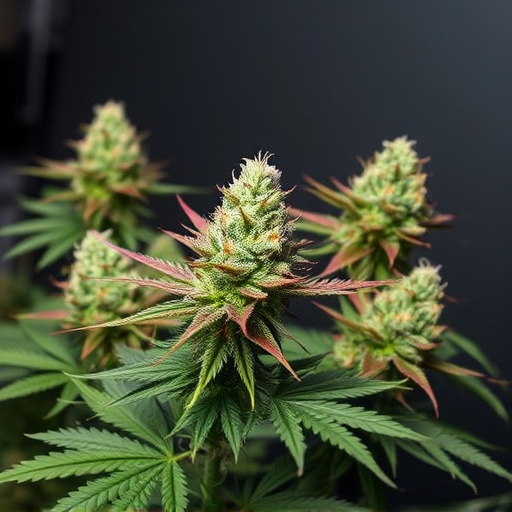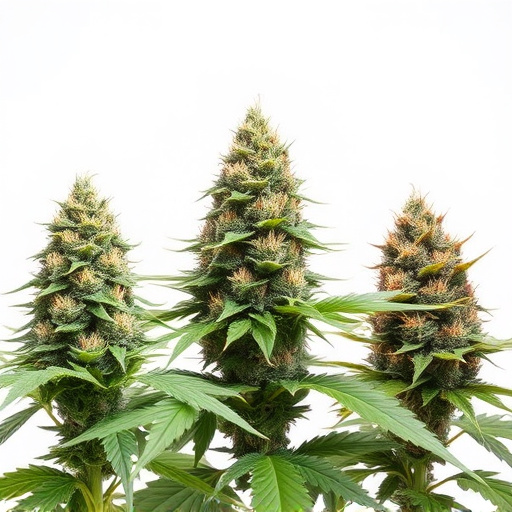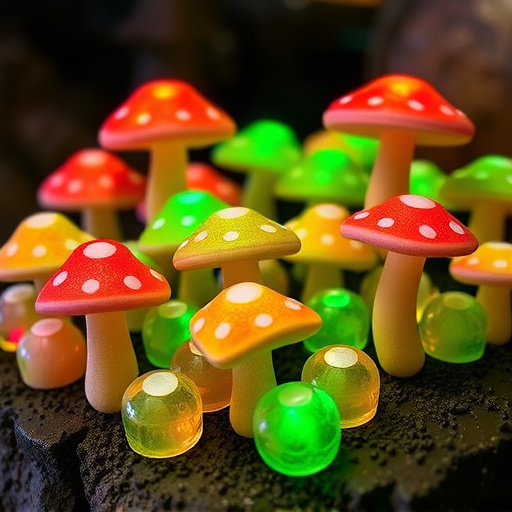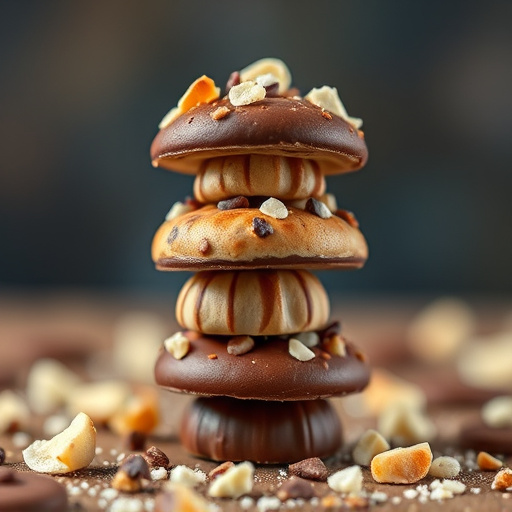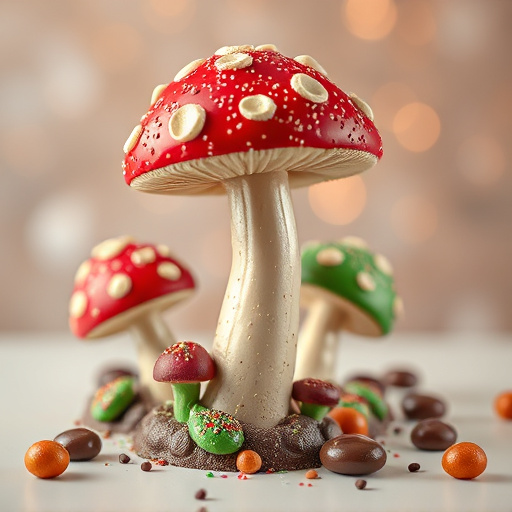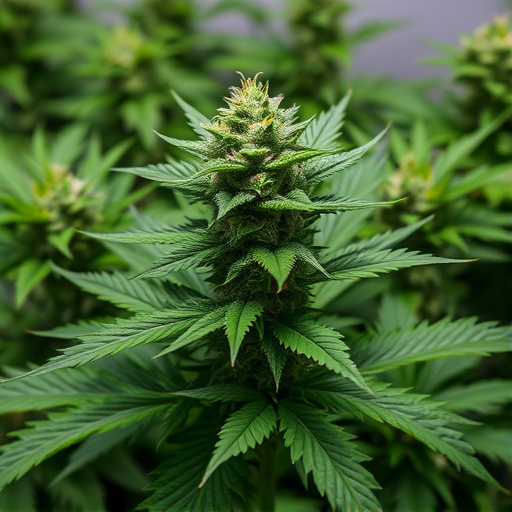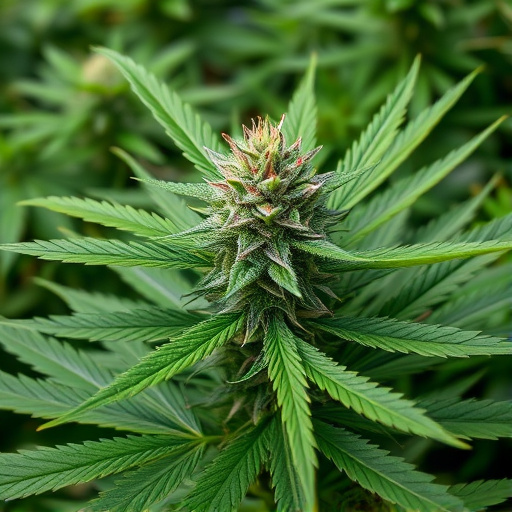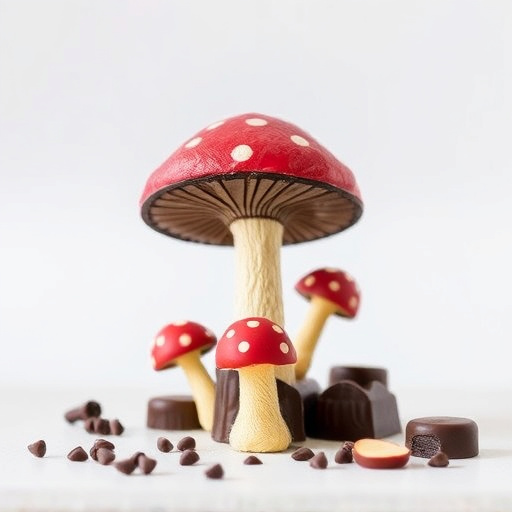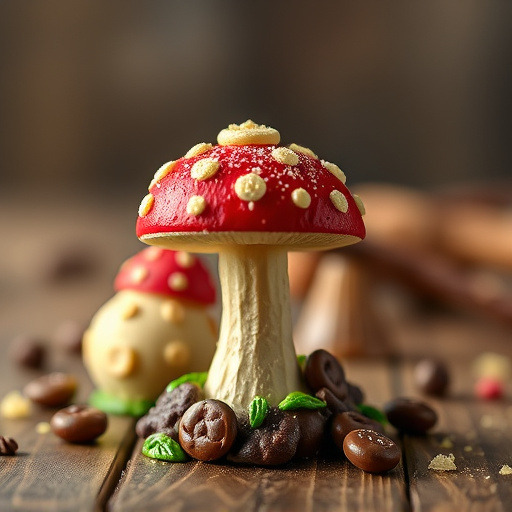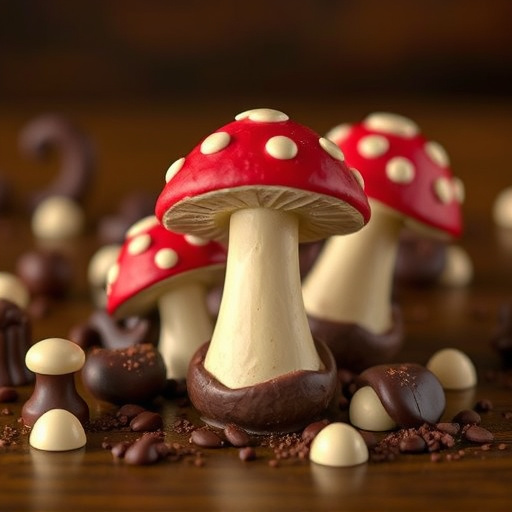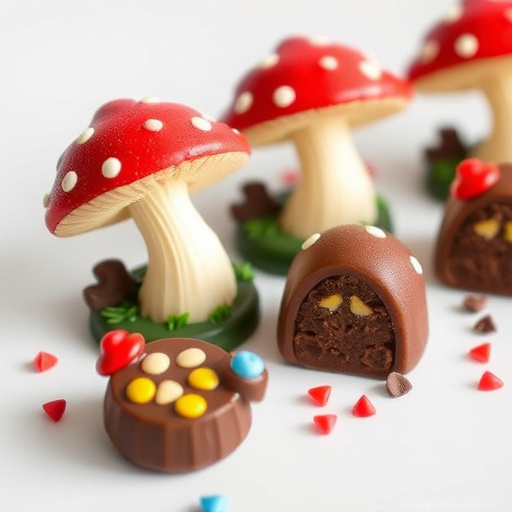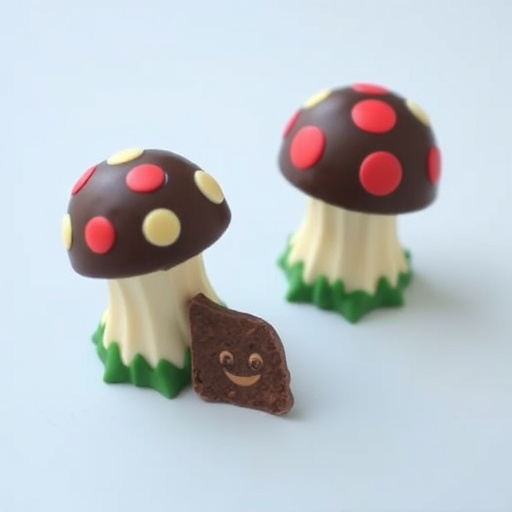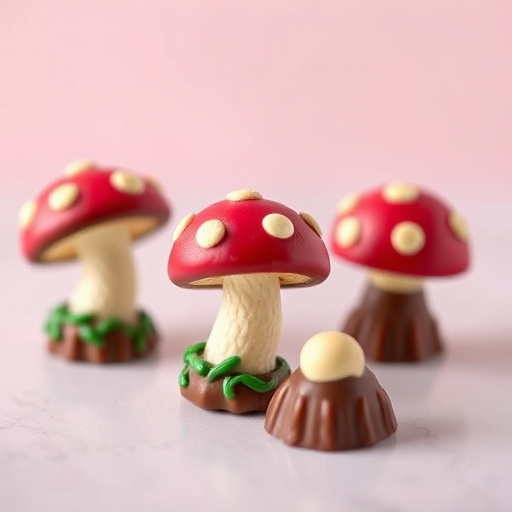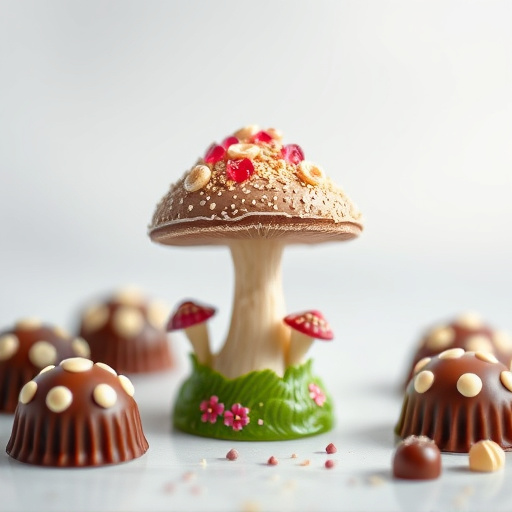"The Science Behind Magic Mushroom Chocolates explores how psilocybin and psilocin, active compounds in Psilocybe cubensis mushrooms, interact with brain serotonin receptors, causing altered states of consciousness, heightened senses, and psychological effects like increased creativity. As a palatable delivery system, chocolate provides an accessible way to experience these properties. Beyond recreation, the science highlights potential therapeutic benefits for anxiety, depression, and PTSD, with ongoing research into its effects on brain connectivity and personal insights."
“Unleash your senses with the enchanting world of magic mushroom chocolates—a delightful fusion of nature’s wonders and confectionery delights. This article delves into the science behind these unique treats, exploring the active compounds psilocybin and psilocin and their mind-altering effects on the human body. From dark to milk chocolate infusions and various edible forms, we navigate the landscape of magic mushroom chocolates, highlighting potential therapeutic benefits while emphasizing responsible consumption. Discover the intricacies of this captivating topic, where the science meets the sweet.”
- The Active Compounds: Psychedelics in Chocolate
- – Explaining the science behind psilocybin and psilocin
- – How these compounds interact with the human body and brain
The Active Compounds: Psychedelics in Chocolate
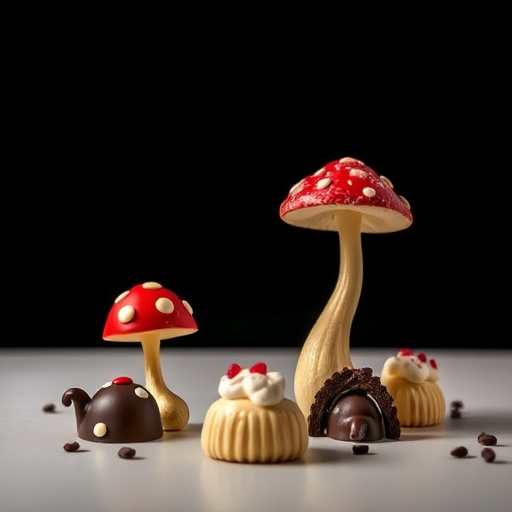
The active compounds responsible for the psychological effects often associated with “magic” mushroom chocolates are primarily psychedelics, notably psilocybin and psilocin. These compounds are naturally occurring substances found in certain species of mushrooms, scientifically known as Psilocybe cubensis. When consumed, psilocybin converts into psilocin within the body, leading to altered states of consciousness and heightened sensory perception. The Science Behind Magic Mushroom Chocolates involves understanding how these psychedelics interact with our neurological systems. Research suggests that psilocybin and psilocin influence serotonin receptors in the brain, particularly those associated with mood regulation, cognition, and perception. This interaction can result in various psychological effects, including enhanced creativity, altered time perception, and profound emotional experiences.
The chocolate medium serves as a clever delivery system for these psychedelics, offering a more palatable and accessible way to experience their effects compared to traditional methods like ingestion of dried mushrooms. By infusing psilocybin into chocolates, consumers can enjoy the potential benefits while indulging in a delicious treat. This innovative approach has sparked interest among those seeking alternative forms of recreational and therapeutic experiences, all while leveraging the science behind magic mushroom chocolates for its unique properties.
– Explaining the science behind psilocybin and psilocin
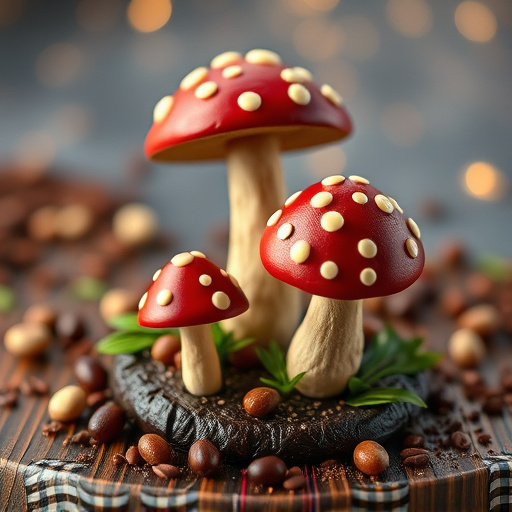
Psilocybin and psilocin are key compounds responsible for the unique effects associated with magic mushroom chocolates, or products derived from Psilocybe cubensis mushrooms. These compounds belong to a class of chemical substances known as psychedelic amino acids. When consumed, psilocybin converts into psilocin within the body, which then binds to serotonin receptors in the brain. This interaction triggers a range of psychological and sensory changes, often referred to as a ‘trip’. The science behind these effects is complex, involving various neural pathways and neurotransmitters, leading to altered perceptions, heightened creativity, and profound personal insights for some users. Understanding the science behind psilocybin and psilocin is crucial in navigating the potential therapeutic benefits and risks associated with magic mushroom chocolates.
– How these compounds interact with the human body and brain
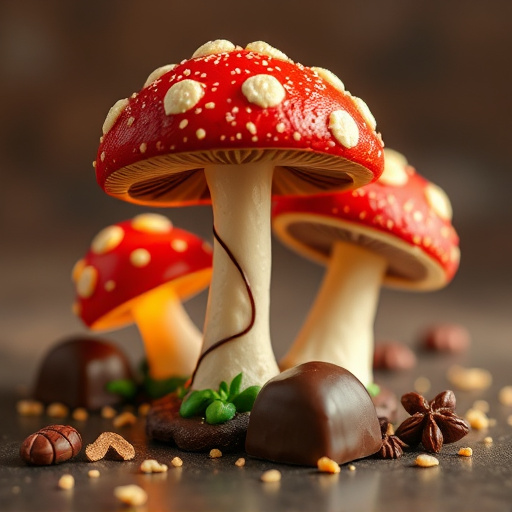
The science behind magic mushroom chocolates involves a fascinating interplay between compounds found in psilocybin mushrooms and the human body, particularly the brain. Psilocybin, the primary psychoactive compound, is converted into psilocin within the body, which acts as a serotonin receptor agonist. This interaction leads to altered perceptions, heightened sensory experiences, and a range of emotional responses—all without the harsh effects commonly associated with other drugs. The experience, often described as mystical or spiritual, is thought to be linked to increased connectivity between different brain regions, as suggested by neuroimaging studies.
These compounds don’t simply alter consciousness; they also have potential therapeutic benefits. Research indicates that psilocybin can help alleviate symptoms of anxiety, depression, and post-traumatic stress disorder (PTSD). The interaction between these substances and the endocannabinoid system in the brain further complicates their effects, contributing to feelings of relaxation, euphoria, and even insights into personal challenges. Understanding this intricate dance of compounds offers a glimpse into why magic mushroom chocolates are gaining interest both for recreational use and as potential therapeutic tools.
The Science Behind Magic Mushroom Chocolates combines the ancient allure of psychedelic compounds, such as psilocybin and psilocin, with modern innovations in confectionery. By understanding the science behind these compounds’ interactions with the human body and brain, we can appreciate the nuanced effects they offer. Whether for therapeutic or recreational purposes, magic mushroom chocolates represent a unique fusion of nature’s gifts and culinary art, opening doors to new perspectives and experiences.
